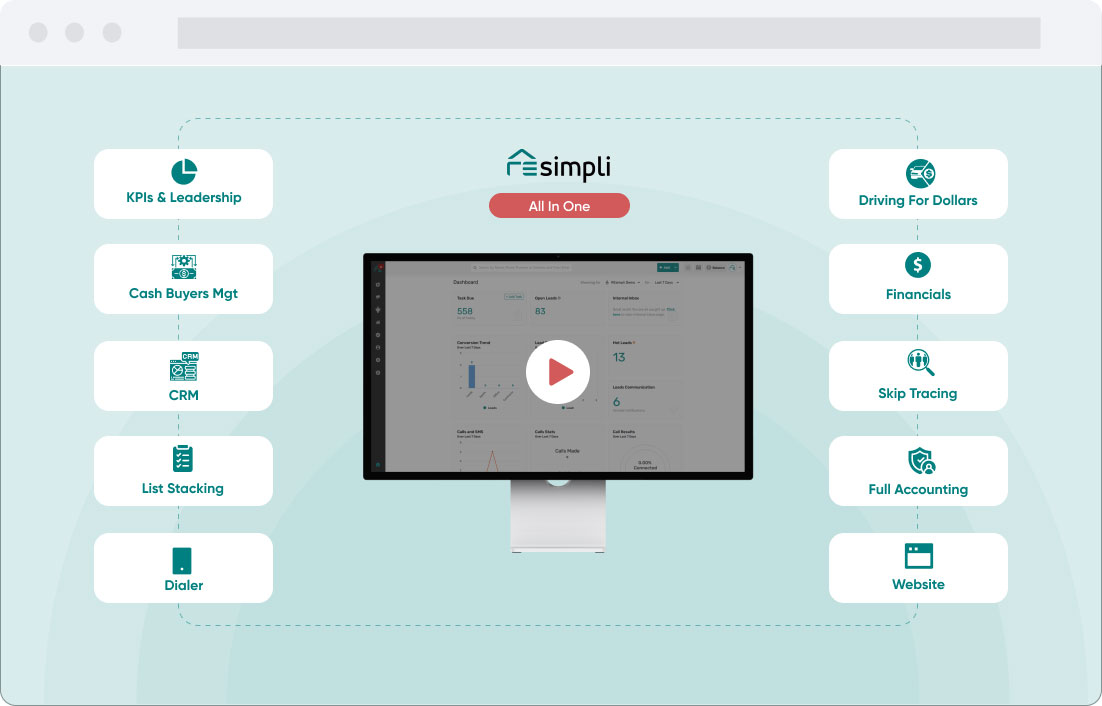Indiana Real Estate Investing: Opportunities and Stats for Investors in 2025
Introduction
Is Indiana a strong market for real estate investors in 2025?
As the national housing market experiences shifting trends, Indiana stands out for its affordability, rental demand, and value-add opportunities. From first-time landlords to full-time flippers, investors across the country are turning to Indiana for cash flow and consistent returns.
This guide breaks down the key investment stats, market trends, and the top strategies that work in Indiana today. Whether you are local or investing virtually, this resource will help you evaluate Indiana as a top-tier target for your real estate portfolio.
Indiana Real Estate Market Snapshot in 2025
Here is what you need to know about the investment landscape in Indiana right now:
- Population: Approximately 6.8 million
- Median Home Price: Around 221 thousand dollars
- Average Monthly Rent: 1160 statewide, higher in major cities like Indianapolis
- Rental Yield: Averages between 6 and 9 percent, depending on zip code
- Vacancy Rate: Around 5.2 percent statewide
- Year Over Year Price Appreciation: Approximately 3.4 percent
- Job Market Growth: Positive in sectors like logistics, healthcare, manufacturing, and tech
Sources include Redfin, Zillow, the PwC Emerging Trends report, and ATTOM Data Solutions.
Why Real Estate Investors Are Paying Attention to Indiana
1. Affordable Entry Points with Strong ROI
Indiana consistently ranks as one of the most affordable states to purchase investment properties. Compared to higher-cost markets like Illinois or Michigan, investors can acquire more properties with less capital and achieve strong rental yields.
- Typical investor purchase price: 150 to 250 thousand dollars
- Average down payment required: 10 to 20 thousand dollars
- Many investors achieve positive cash flow from day one
This makes Indiana especially attractive for out-of-state investors looking to enter the Midwest with a strong price-to-rent ratio.
2. Strong and Steady Rental Demand
Indiana is home to major universities, medical centers, distribution hubs, and manufacturing facilities. These create a dependable rental base in cities like
- Indianapolis: Indiana’s capital and largest city
- Fort Wayne: A growing economic hub in northeast Indiana
- Bloomington: Fueled by Indiana University
- Lafayette: Driven by Purdue University and related research centers
- Evansville: A regional hub in southern Indiana
Tenant demand is bolstered by affordability challenges in homeownership, making rentals a necessary option for many working professionals and students.
3. Rehab-Friendly Housing Stock
Much of Indiana’s housing stock was built before 1980. This creates profitable opportunities for investors who can modernize outdated homes. Flippers and BRRRR investors are especially drawn to
- Three-bedroom one- or two-bath ranch-style homes
- Brick homes in quiet neighborhoods
- Properties near major roads, schools, and job centers
Investors who understand local comps and know how to manage renovation budgets can force appreciation and exit profitably.
4. Business-Friendly Climate
Indiana has a reputation for low regulation and investor-friendly policies. This includes:
- No statewide rent control
- Straightforward eviction processes
- Lower property tax rates than many other states
- Affordable insurance rates for landlords
- A pro-growth economic agenda supported at the state level
This stable regulatory environment reduces the long-term risk of holding investment property.
Top Investment Strategies That Work in Indiana
Buy and Hold Rentals
Best Cities
Indianapolis, Fort Wayne, Evansville, Lafayette
Typical Cap Rate
Six to eight percent in most Class B and C neighborhoods
Pro Tip
Target single-family homes near major employers or near universities for long-term stable occupancy
Fix and Flip
Best Zip Codes
- 46201 and 46205 in Indianapolis
- 46806 and 46807 in Fort Wayne
- 47711 in Evansville
Median Profit per Flip
Twenty-five to fifty thousand dollars, depending onthe scope and holding time
Pro Tip
Focus on properties under 200 thousand dollars and use cosmetic upgrades to stay under budget
BRRRR Investing (Buy, Rehab, Rent, Refinance, Repeat)
Ideal for investors building long-term wealth and equity with less cash tied up
Markets
- South Bend
- Muncie
- Anderson
- Michigan City
Use REsimpli to track before and after value, tenant onboarding, and cash-out timelines
Wholesaling
Indiana has a very active wholesaling community. Direct-to-seller marketing works well with:
- Tired landlords
- Absentee owners
- Probate leads
- Preforeclosure properties
Pro Tip
Use REsimpli’s list pulling and skip tracing features to identify and contact motivated sellers quickly
How to Use REsimpli for Indiana Market Success
REsimpli helps investors manage every step of the process with tools designed for real estate professionals. Inside REsimpli, you can:
- Pull high equity, absentee, or vacant property lists filtered by Indiana zip codes
- Track response rates and lead quality by city or campaign type
- Send drip campaigns via text, email, RVM, and direct mail
- Store repair estimates, offer details, and closing documents all in one place
- Manage buyers’ lists by location and strategy type for wholesaling deals
Whether you are local to Indiana or investing remotely, REsimpli provides a full system to source, close, and scale your deals without needing five different tools.
Conclusion
Indiana real estate investing in 2025 is defined by opportunity, affordability, and long-term stability. Investors who understand the local data, use smart technology, and adapt to market shifts will find consistent success across rentals, flips, and creative finance deals.
If you are evaluating your next target market or looking to deepen your presence in the Midwest, Indiana belongs at the top of your list.
FAQS
Yes. Indiana offers affordable home prices, strong rental demand, and investor-friendly policies, making it one of the best markets for cash flow investors.
Indianapolis leads in volume, while Fort Wayne, Lafayette, and Evansville offer strong yield opportunities and stable demand.
Absolutely. Many investors operate virtually using tools like REsimpli for lead management, marketing, and closing coordination.
Yields range from 6% to 9%, depending on the city and neighborhood class. Properties under $250K tend to produce the best returns.
No. Indiana does not have statewide rent control, making it one of the more landlord-friendly states in the U.S.

